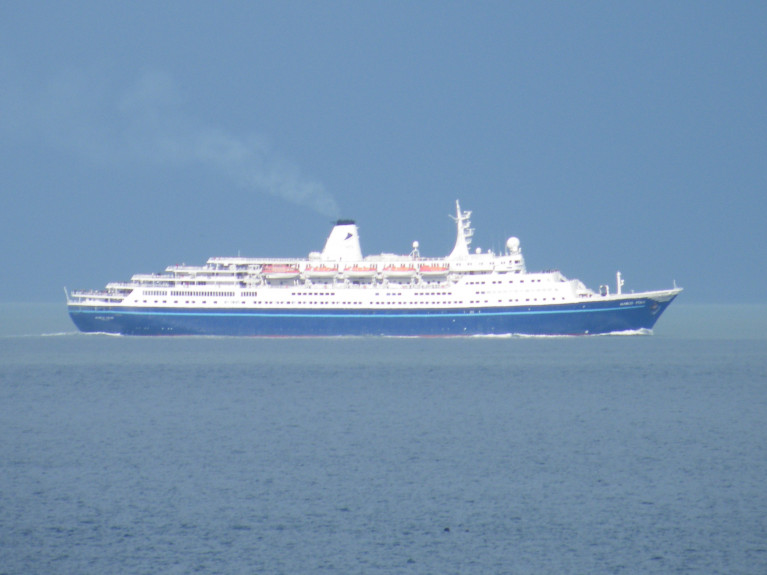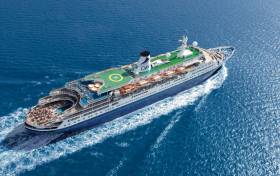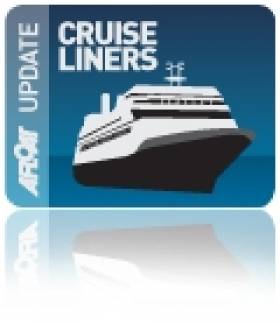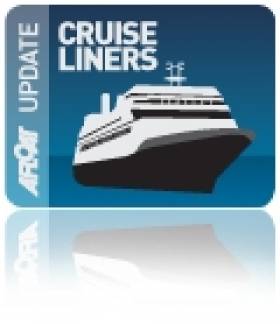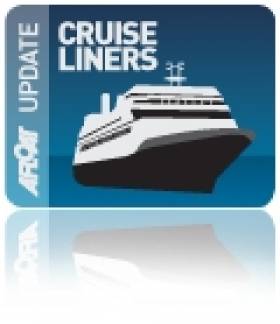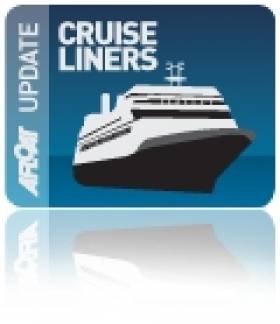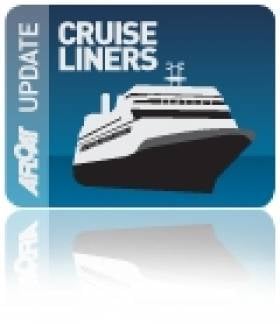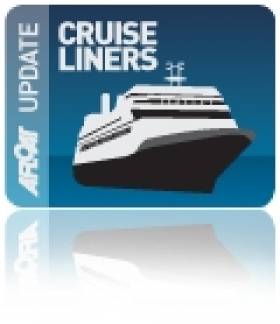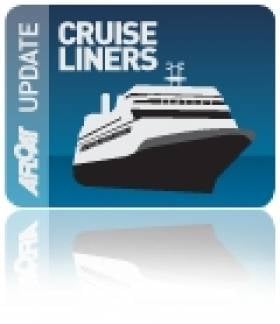Displaying items by tag: Cruise & Maritime Voyages
A UK cruise operator Cruise & Maritime Voyages (CMV) has gone into administration, with the “global pandemic of seismic proportions” being blamed for its demise.
The line, writes The Telegraph, which has six ships in its fleet and was founded in 2010, has “ceased trading with immediate effect”, according to administrators Duff & Phelps. It comes after concerns were raised last month that the company was in desperate need of additional funding – which it said it was “confident” of securing.
There are no passengers on board any of CMV’s vessels, with all operations paused since March. It has been due to resume sailing on August 25. All future bookings have been cancelled.
Customers who had trips booked can find out how to get their money back on Cruise & Maritime Voyages’ website. The company mainly sold cruise packages, which are protected by ABTA, and a smaller number of flight-inclusive packages which are protected by ATOL.
For much from the newspaper click here.
In addition Afloat adds a link to CMV website which announced its news of administration (yesterday, 20 July) and advice for clients of the operator click here
The classic cruiseship once a former Soviet era liner, was a frequent caller to Irish ports over the last decade and of recent years fleetmate Magellan which 'homeported' out of Dublin Port and Cork (Cobh) catering for the Irish marketplace.
#CruiseMedley – Cruiseships small and large called to the capital to add to the summertime atmosphere of Dublin Riverfest's gathering of tallships that graced the Liffey quays, writes Jehan Ashmore.
Hebridean Sky, the intimate sized ship of just 4,200 gross tonnage had berthed at the North Wall Quay Extension. The pier lies to the east of the Tom Clarke toll-bridge, where the new two-berth cruise berth is to located.
Guests of the Swoop-Antartica adventure ship could been on the uppermost deck at the stern. From this elevated view they could overlook the toll-bridge and beyond to the busy scene of tallships in the direction of the city-centre.
At the end of this ‘extension’ of the North Wall where the tallships met to welcome thousands over the three day event, was berthed in Alexandra Basin the 44,000 gross tonnage Artania. This ship had sailed from Bremerhaven, Germany.
On the Sunday of the Dublin Riverfest, the UK ThunderCat powerboat team were based opposite of the Phoenix Reissen operated cruiseship that been the Poolbeg Yacht Boat Club & Marina. As pictured above the ThunderCats carried out a behind the scene flag-nation display practise involving race-crew members standing on the craft's twin hull.
On the Bank Holiday Monday, Cruise & Maritime Voyages 46,000 gross tonnage Magellan, the UK operator’s current flagship called to the port for the first of five ‘home-porting’ calls. This is where Irish guests can join the 1,450 passenger ship that continued to Liverpool as part of a cruise to the Norwegian fjords.
According to CMV's Irish agent, JMG Travel, these Irish direct cruises have been sold-out. Following their success, a repeat season but with more direct cruises from Dublin is already scheduled for 2018.
The title of CMV flagship for Magellan will however be gone by next year’s season, as of this Thursday, the newly acquired successor is to be named Columbus at a ceremony in London. The 63,000 gross tonnage flagship will too be making a call to the Irish capital later this month. Albeit with a smaller capacity of just 775 passengers.
Also making a call on the Bank Holiday Monday and staying overnight was Hal America Line’s Prinsendam. As previously reported on Afloat, the smallest ship of the HAL cruise-fleet at 37,000 gross tonnage made an appearance for RTE TV's 'The Local Eye' series when calling to Killybegs.
The cruiseship with tiered stern decks remains in port until departing tonight. Likewise of Magellan this cruiseship is also bound for Merseyside.
Finally, the capital port's latest caller, Crystal Symphony docked today in Alexandra Basin. The 51,000 tonnes ship will too overnight and is operated by Crystal Cruises.
Classic Liner to Cruiseship Calls to Capital
#ClassicLiner – A classic liner built for the Soviets more than 50 years ago that became a cruiseship sailing the seven seas and to both poles, called to Dublin Port today, writes Jehan Ashmore.
Marco Polo which is home-ported in London (Tilbury), is a classic ship steeped in maritime tradition and in which operators, Cruise & Maritime Voyages have a loyal following on this traditional ship.
The ocean-going lady of the sea had docked at Dublin mid-morning as part of UK and Irish ports cruise. Yesterday, her passengers visited western Scotland, to Tobermory on the Isle of Mull.
Today, passengers are exploring the capital and environs before re-embarking the 22,080 tonnes veteran vessel this evening. A departure time of 2200 is scheduled for the next port of call, the Scilly Isles off Cornwall.
The cruiseship is docked at Dublin’s Ocean Pier, apt given she served as a transatlantic liner between the USSR and Canada as the Alexandr Pushkin. The second of a quartet of the ‘poet’ class sisters was named after Russia’s greatest poets and writers. She was built in 1965 at the Mathias-Thesen Werft in Wismar, in the former East Germany.
Alexandr Pushkin operated in the summer between Leningrad, Bremerhaven, London, Le Havre and Montreal, a liner service she dutifully carried out until the late seventies. During the winter she cruised in warmer climes while mostly on charter to western companies.
The 800 capacity cruiseship was extensively re-built in 1993 and still retains classic lines, where tiered sun decks featuring a swimming pool and whirlpools overlook a cruiser stern. More unusual are the open decks below the bridge and overlooking the bow, a feature notably absent from today's giant enclosed cruiseships.
Magellan, the Newcomer to Join Cruise & Maritime Voyages Fleet in 2015
#NewCMVflagship – UK operator, Cruise & Maritime Voyages (CMV) are to introduce Magellan in Spring 2015 as their new flagship and like the Marco Polo, Astor and Azores, she will operate as an adult-only friendly ship, writes Jehan Ashmore.
At 46,052grt Magellan is the largest member of the CMV fleet which in association with sister company TransOcean Kreuzfahrten operate a trio of river-based cruise vessels in Europe.
Magellan is to replace Discovery, which as previously on Afloat.ie, opened the Belfast Harbour cruise season this year and she is no stranger to other ports on this island. Launched in 1971 as Island Venture, she would later feature with her sister in the US TV series the 'Love Boat'.
As for the Magellan her most recent career was with Costa Crociere serving as their Grand Holiday. In 2010 there was a rebuild and capacity is for approximately 1,250 adult passengers (16 years plus). Accommodated is provided in 726 cabins (incl. 14 Balcony Suites) spanning nine passenger decks and are serviced by eight lifts.
She features wide corridors and stairways and expansive deck areas with wood type decking in many areas. In addition a wide choice of well-appointed lounges and panoramic seating coupled with observation area suited to the operator's scenic cruise programme.
CMV claim that Magellan offers a feeling of intimacy and personal attention when compared with the 'mega' resort style ships built today. They also say that there fleet have no climbing walls or ice-skating rinks and no kids!
Dublin Port 2013 Cruise Season to Start with a New Discovery
#CRUISE LINERS – In 2013 Cruise & Maritime Voyages are to charter Discovery (1971/20,216grt) for the UK cruising season to directly replace Ocean Countess, writes Jehan Ashmore.
The charter of the 700 passenger Discovery from Voyages of Discovery will see her operate cruises from Bristol Avonmouth, Liverpool, Hull and Harwich. As part of the charter arrangement her owners will also market the vessel during the season as Discovery Sailaway.
Discovery will undergo an extensive winter dry-docking and refurbishment programme prior to joining the CMV fleet in February 2013.
Her inaugural 'Irish' call will also mark the first cruise caller next year to Dublin Port scheduled on 8 April during a 5-night Springtime Gardens and Charms Cruise. Sharing the season will be CMV's slightly larger 800 passenger Marco Polo (1965/22,080grt).
Autumn Cruise Heads for Sunnier Climes
#CRUISELINERS- Cruise & Maritime Voyages (CMV) Ocean Countess (1976/16,795grt) is scheduled to depart Dublin Port this evening, writes Jehan Ashmore.
The Portuguese flagged vessel is to start on a 14-nights "Canaries & Madeira" cruise, with Irish passengers having the opportunity to embark directly in the capital.
She is to sail overnight to Liverpool, however her first Iberian port of call to Lisbon, is not until this Friday. Fares for the fortnight cost from £1,207 sterling and the cruise was organised through John Galligan Travel.
CMV also operates another veteran with the slightly older Marco Polo (1973/19,860grt) which too is a regular visitor to the port.
Bantry Bay's Double Role on Display
#CRUISE LINERS – Cruise & Maritime Voyages Marco Polo (1965/22,080grt) anchored off scenic Glengariff today and also sharing Bantry Bay is the tanker Amundsen Spirit (2010/109,290dwt), writes Jehan Ashmore.
The 800-passenger Marco Polo had sailed from Cork and the veteran vessel by coincidence has a deck named Amundsen Deck (etc).
The authority responsible for shipping traffic is Bantry Bay Harbour Commissioners, where the seasonality of the cruise callers visiting West Cork is offset by the year-round business of tankers.
Large tankers can be handled in the deep waters off the Bantry Bay Terminal on Whiddy Island. However the terminal has no jetty facilities, instead tankers use the single-point mooring (SPM) a buoy that is anchored offshore. This system also performs in unloading cargo that is transferred through pipes feeding into the tank farm located on the island.
The tugs Ocean Bank and Trojan were attending the Amundsen Spirit (249m long X 44m beam X 14.6m draft), noting at the bow she a structure to facilitate the SPM operations.
#HISTORIC LIVERPOOL CRUISECALL - Cruise & Maritime Voyages (CMV)'s Ocean Countess (1976/17,593grt) became the first turnaround cruise call in four decades after departing Liverpool on Tuesday, however the ship suffered temporary loss of engine power, forcing the vessel to turn around and divert to Holyhead, writes Jehan Ashmore.
The cruiseship with around 700 passengers had embarked during scenes of celebrations as crowds of onlookers gathered for the historic occasion at the Liverpool City Cruise Terminal. Several hours later into the first leg of an eight-night Scottish Isles cruise the incident took place while off the west coast of the Isle of Man.
With the detour to Holyhead, passengers disembarked at the Welsh port and where provided with a shore-side tour excursion programme. Incidentally the Anglesey port welcomed the vessel the previous day, as she made a scheduled call before completing the inbound turnaround at Liverpool.
CMV have scheduled a further ten turn-around cruises from Liverpool this year using the terminal that was completed in 2007 at a cost of £17m. Following Ocean Countess's inaugural turnaround, Princess Cruises considerably larger 3,000 passenger / 113,000 tonnes Caribbean Princess made a call yesterday.
The Liverpool City Cruise Terminal up until now could only accept transit calls as the facility was built with public expenditure. It was deemed otherwise unfair to compete with other leading UK ports with cruise infrastructure facilities that where not funded by the public purse.
In order for the Merseyside to accommodate turnarounds, this was made feasible as Liverpool Council agreed to repay close to €9m of a grant for the river-based terminal in addition build a baggage handling facilities.
Prior to the terminal opening, only small cruiseships could call but instead had to navigate within the dock system to Langton Dock.
From Falmouth to the Fjords
#CRUISE LINERS – Dublin Port's first cruise caller for this season will be Arion which today sets sail from Falmouth on an eleven night / twelve day cruise to Scotland and Norwegian fjords. The 5,888 gross tonnes cruiseship built in 1965 is to berth in the capital at Ocean Pier, writes Jehan Ashmore.
The veteran vessel which has sleek traditional lines can carry over 300 passengers and she is operated by Classic International Cruises. Her visit will be one of around 90 cruise calls scheduled to Dublin Port during this year's season which stretches to early October. The majority of these calls will be in the summer and where several ships will be making repeat port of calls.
With so many callers to Dublin Port, this brings a greater variety of vessels as evident between the Arion and Princess Cruises considerably larger Grand Princess which is due next week. The giant vessel weighs over 109,000 gross tonnes and has a capacity for over 4,000 passenger and crew.
The Portuguese flagged Arion is also set to open the season to Galway, as previously reported she is to make an anchorage call off the mid-west harbour next month.
Meanwhile following all the recent focus centred in Cobh, Cruise & Maritime Voyages Marco Polo is expected to arrive this afternoon by berthing at the town's dedicated cruiseship quayside.
Cruiseship Boost for Belfast
#CRUISE LINERS-Belfast Harbour looks forward to another bumper year as cruise operators are to increase by 32% compared to last year, with 41 cruise ships bringing almost 75,000 visitors to the port.
The following major operators are to visit: Cruise & Maritime Voyages, Fred Olsen Cruise Lines, Holland America Line, Princess Cruises and Saga Cruise and others will dock from far flung destinations.
At over 1km long, Stormont Wharf, will again be the main berth for cruiseships in particular the ability to accommodate an increasing trend in larger class vessels touring the Irish Sea. The wharf was extended in recent years at a cost of £10m and is the longest deepwater quay in Ireland.
To promote Belfast Harbour as a cruiseship destination, the port and the Belfast Visitor and Convention Bureau (BVCB) set up the Cruise Belfast Initiative to market the location internationally.
For further information visit www.cruise-belfast.co.uk and to view the seasons schedule of cruise callers click HERE.


























